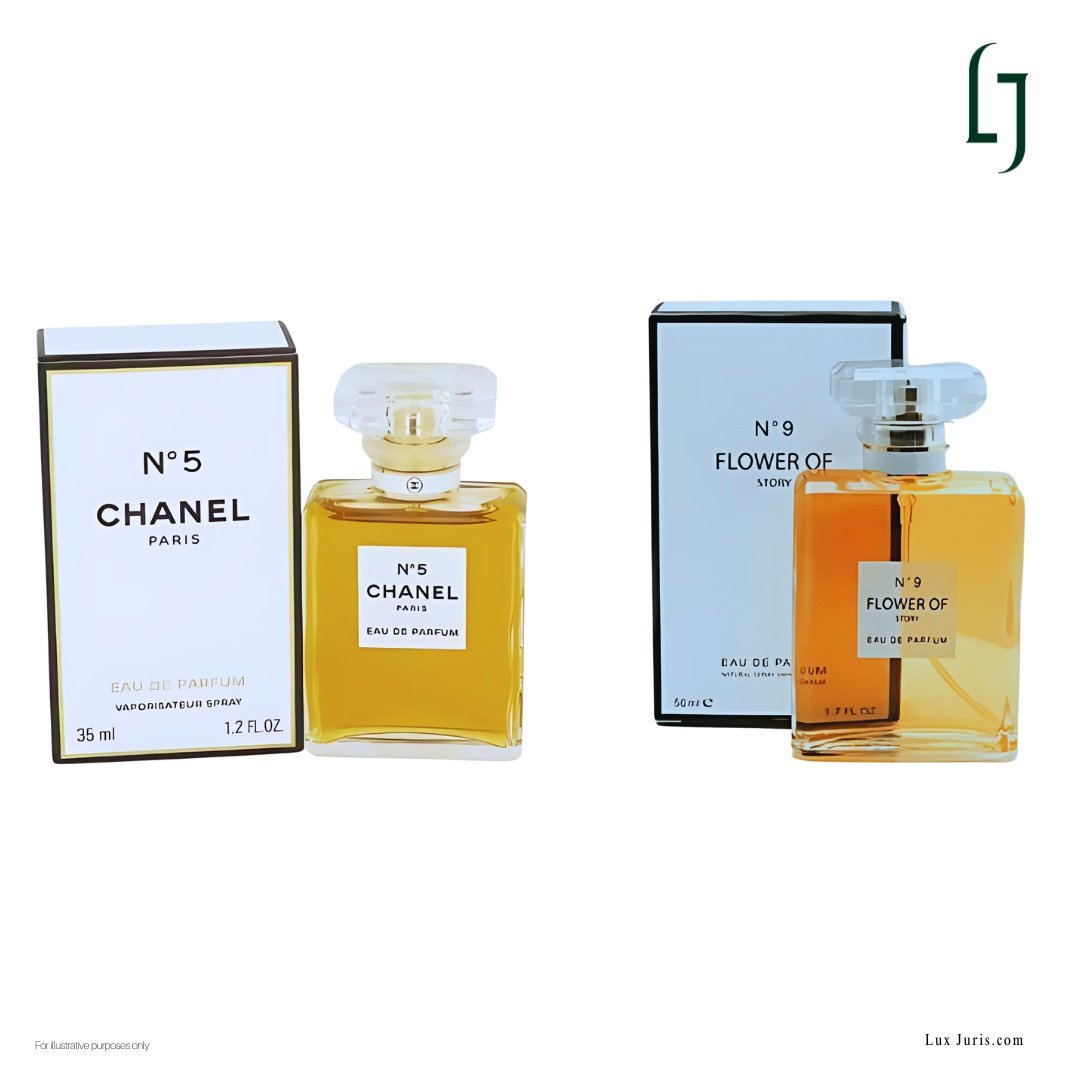In 2019, CHANEL identified that a Chinese company, Yiwu Ai Zhi Yu Cosmetics Ltd. also referred to as Story of Love Cosmetics Co., Ltd. (SLC), was producing a perfume marketed as “N°9 Flower of Story,” which closely imitated the distinctive trade dress of CHANEL’s N5 perfume. The alleged infringing product replicated the bottle shape, stopper design, colour scheme, front-label layout, font, size, and proportion of the original, creating a visual impression strikingly similar to N°5 while featuring different textual markings.
In response, CHANEL purchased the product online to secure evidence and subsequently filed suit against Story of Love Cosmetics Co., Ltd. (SLC) and its distributor, an e-commerce operator based in Xi’an, in the Xi’an Intermediate Court, alleging unfair competition based on trade dress infringement under the Anti-Unfair Competition Law of China.
Nature of the Infringement
The case focused on the look-alike character of the products rather than identical textual marks. CHANEL argued that the overall trade dress, including graphics, colours, shapes, sizes, fonts, and layout, had achieved sufficient recognition in China to function as a source identifier for consumers. The N°9 perfume, though bearing different letters, imitated this combination in a manner likely to mislead the public. This type of infringement fell squarely within the scope of Article 6(1) of the Anti-Unfair Competition Law (2019 Amendment), which prohibits use of labels, packaging, or decoration identical or similar to those of another business with certain influence to mislead consumers.
The Case: First Instance
The Xi’an Intermediate Court evaluated CHANEL’s evidence and confirmed that the N°5 perfume and its packaging were indeed well-known in China, with the bottle and box design functioning as identifiable commercial signs. The court applied Article 4(3) of the Supreme People’s Court Interpretation, using trade mark comparison principles to assess similarity. It concluded that the trade dress and packaging of the N°9 perfume were visually similar enough to create a likelihood of confusion, particularly among consumers whose native language is non-alphabetic.
The court ordered SLC to cease the infringing activity and pay damages totalling CNY 600,000 (€71,772). The distributor, was exempted from damages as it had only sold two bottles, acted under the producer’s license, and promptly removed the infringing products once notified.
Assessment and Outcome: Second Instance
In 2021, SLC appealed to the Shaanxi Higher People’s Court, arguing that neither the Chanel N5 trade dress nor the packaging were sufficiently distinctive, and that consumer confusion would not arise due to different target groups and pricing differences. The appellant also cited administrative rejections of CHANEL’s 3D trademark applications.
The Higher Court distinguished trade dress from 3D trademarks, emphasising that the legal requirements and protection thresholds differ. It reaffirmed that trade dress protection covers the overall design and combination of visual elements, not just the bottle itself or textual marks. The court clarified that price gaps or textual differences do not eliminate the likelihood of confusion, which is assessed prior to purchase. It upheld the trial court’s ruling, confirming that SLC had committed unfair competition.
The court additionally highlighted the dangers of copycat luxury goods, noting that low cost imitation disrupts market order and harms the reputations of established brands.
Conclusion
The Chanel N°5 vs N°9 case demonstrates the practical importance of trade dress protection in China, especially for luxury goods. It shows that unfair competition law reaches beyond the limits of trade mark law, protecting the overall visual identity of products even without registered marks. Consumer confusion is assessed prospectively, meaning that imitation need not result in actual sales to be actionable.
For CHANEL and other luxury brands, the case shows that copying well-known trade dresses is illegal, can be enforced in court, and is closely watched, offering strong legal protection against market abuse.
Sources and additional reading:
